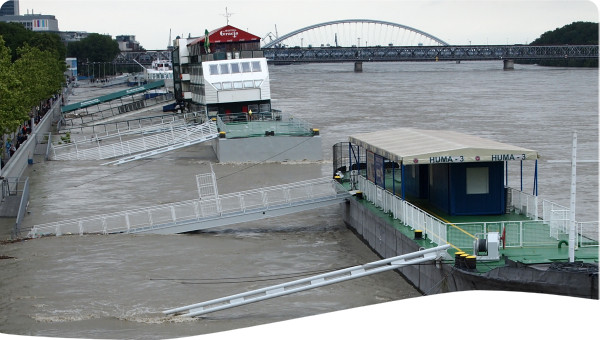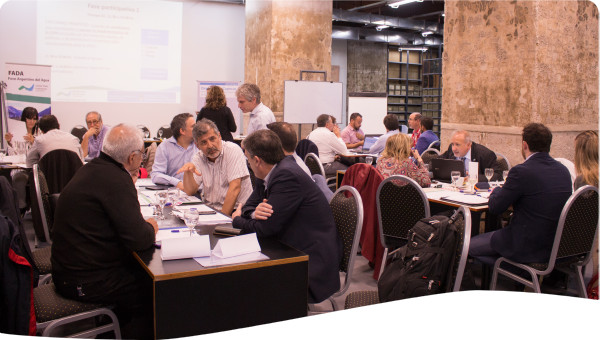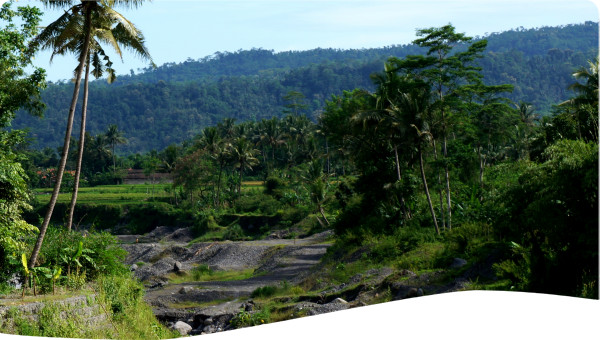Clearing for logging, combined with expanding agriculture and palm oil plantations has led to increased flooding, and pollution of the Kinabatangan River due to pesticides and fertilizers. Working in partnership, the Sabah Wildlife Department and the WWF took action and have established the Lower Kinabatangan Wildlife Sanctuary. The key lesson of this case is the value of starting with small-scale feasible projects before scaling up.
The Kinabatangan River is the largest and longest river in the Malaysian state of Sabah. It has a main channel length of about 560km, a catchment area of about 16,800km2 and covers almost 23% of the total land area of Sabah. Mean annual rainfall in the catchment is between 2,500mm and 3,000mm. The river, used for transport, trade and communication, has been the lifeblood of local people for centuries. Forest products such as edible bird nests and beeswax, elephant ivory and hornbill casques were once traded. Nowadays there are about 20 palm oil mills in the Kinabatangan basin, which process the produce from rapidly expanding oil palm plantations. The oil is used in the production of margarine, soap, livestock feed, lubricants, and many other industrial and household products. Large-scale commercial logging and small-scale farming began along the Kinabatangan in the early 1950s. This provided the people of Sabah with income and employment. Several forest reserves were created in the 1970s, but these were quickly reallocated for agricultural use. The lower Kinabatangan, with its unique biodiversity, is also increasingly recognized as a destination for ecotourism and local people are becoming involved in this activity. Clearing for logging, combined with expanding agriculture and palm oil plantations has led to the loss and fragmentation of important animal and plant habitats, increased flooding, and pollution of the river due to pesticides and fertilizers. Problems of pollution have been further exacerbated by sewage and refuse from villages along the river. Key stakeholders are the Orang Sungai (the local river people), the palm oil industry, and the ecotourism industry. The unique biodiversity of the area means that the lower Kinabatangan is increasingly recognised as an important destination for ecotourism.
Working in partnership, the Sabah Wildlife Department and the World Wildlife Fund (WWF) have established the 26,000 ha Lower Kinabatangan Wildlife Sanctuary. The ongoing plan is to create and maintain a protected floodplain corridor for the conservation of habitats and species, as well as to mitigate the impact of erosion and flooding. Since the commencement of the project, a wide range of activities has been carried out. These include: seminars on specific topics related to the Kinabatangan floodplains; studies on pollution, hydrology, tourism, and wildlife management; discussions with plantation owners; and the collection and collation of socio-economic data. Planned future activities in the lower part of the catchment include:
- Rehabilitating degraded riparian vegetation on the oil palm plantations. This is intended to prevent further riverbank erosion and improve the forest’s filtering function, thus limiting sediment and agricultural chemicals runoff, and thereby improving water quality, in addition to boosting the connectivity of wildlife habitats.
- Promoting best practice in management of agricultural chemicals and effluent.
- Studying the economic cost of human-wildlife conflicts. This will focus on Asian elephants and be supplemented by research into patterns of movement and the carrying capacity of fragmented forest blocks.
- Developing an ecotourism ‘code of conduct’ for the Lower Kinabatangan with the aim of optimizing the economic and social benefits of tourism for local stakeholders.
Alliances have been forged between conservation and development interests through demonstration of sustainable use activities that others can follow. Planned future activities include, rehabilitating riparian vegetation on palm plantations to prevent further erosion and sedimentation; promoting best practices in agricultural chemicals and effluent management; identifying areas prone to flooding that are unsuitable for palm plantations, but can be set aside for wildlife.
WWF’s approach to conservation of the Lower Kinabatangan embraces the entire landscape and river basin. While the Lower Kinabatangan Wildlife Sanctuary has been a focal point, it is also recognized that actions are needed at the level of the river basin so that upstream problems do not manifest themselves as major impacts on the floodplain. Work with oil palm companies will foster an ethos of environmental protection and responsibility within the decision-making and planning processes carried out by estate managers. With funding already available, engaged and committed partners are identifying potential economic, social and environmental benefits of specific land-use options and practices, seeking ‘win-win’ options.
Stress the economic and social benefits of environmental protection and incorporate this principle into planning and decision-making.
Strategic and integrated approach required to satisfy conflicting interests in a way that protects the river, the flora and the fauna of the area, while ensuring there is water management for industry, industrial agriculture, the environment and local food production.
 Case studies
Case studies

